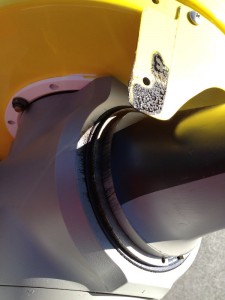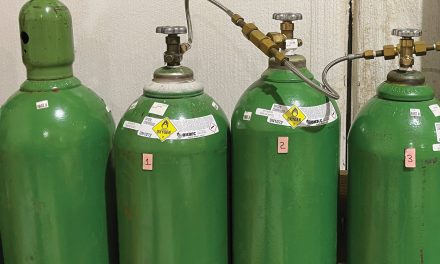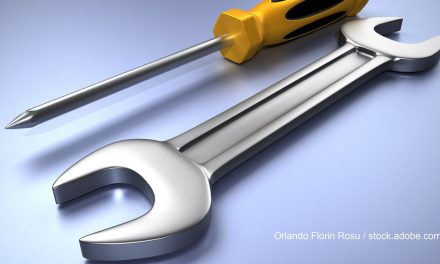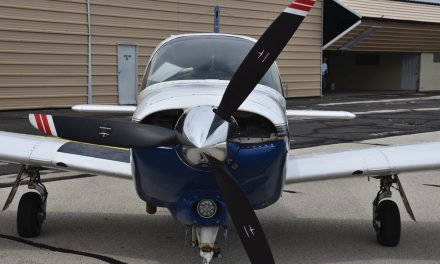 What to Know BEFORE You Go
What to Know BEFORE You Go
Sponsored by AirMart, Inc. – www.AirMart.com
Diagnosing Propeller Leaks
Just what are those oily streaks on your constant speed propeller blades?
No pilot likes to walk up to the plane he’s about to fly to find oil and grease streaking out of the cowling or down the side. It definitely raises some concerns—or at least it should. Now, what about oily streaks on the blades of the propeller? Just what kind of fluids are in a propeller that could make the streaks? Should that raise the same concern in the pilot’s mind?
First, let me say that I’m not getting into a detailed technical explanation of all the different propeller hubs and why they use different oils and greases, primarily, because I’m not qualified to give that explanation. It’s simply not practical for your average A&P to understand the intricacies of every possible propeller; that’s what certified propeller shops with highly trained and skilled technicians are for. However, even the average pilot can get a general understanding of what’s inside a propeller hub and know when he should be concerned.
Ok, let’s take a look at what those streaks could be.
Grease
When a propeller is assembled new or during an overhaul, the bearings and O-ring around the base of the blades are greased. Sometimes, the technician may get a little heavy with the application of that grease, and that excess can sling out while operating the propeller. Usually, this will diminish over time and should stop within 25 – 50 hours. The nice thing about McCauley propellers is that they are only greased at assembly. Many Hartzell propellers, however, have grease fittings that are serviced by the mechanic at each annual.
The Hartzell owner’s manual clearly defines the procedure to follow when lubricating the hub. In a nutshell, there are two grease fittings in the hub for each blade. The rear fitting is removed and grease is pumped into the front fitting. Only a small amount of grease (1 oz. max) is put in. Once grease starts to come out the rear hole where the fitting was removed, STOP. No more grease is needed. If the mechanic continues to pump grease into the hub, he can induce several problems. Not only will grease sling out around the blades, but in extreme cases, it can also be forced into the hub cavity. This can cause sluggish operation of the propeller and will require disassembly to repair.
So, if you’re seeing small amounts of grease streaking out, generally, it’s more of a nuisance and probably not a big deal. If the propeller was recently assembled, it should stop eventually. However, if it’s been running clean and then suddenly starts slinging grease excessively, there may be an issue and it should be inspected for cracks.
Red Oil
Many McCauley propeller hubs are filled with red-colored oil which serves several purposes: It lubricates the bearings; it helps protect against corrosion; and it helps with the detection of cracks in a hub. Many A&Ps, including myself, were taught that leakage of red dye meant an immediate grounding of the plane. The propeller was then removed and sent to a prop shop to be inspected. However, I’ve since learned that’s not necessarily the case.
The early McCauley designs incorporated a threaded blade that was screwed into the hub. Cracks were far more prevalent in this design; therefore, McCauley started using the red-dyed oil to help with crack detection. If you see red dye on one of these early models, it should be inspected by a certified prop shop before further operation.
The current McCauley propellers use a threadless blade, and are much more reliable. And while McCauley still uses the red oil, cracks are rare. However, if you do see red oil streaking up a blade, or around the base, you need to take a close look. Did you know your McCauley propeller comes with an Owner/Operator Information manual? It can be found at www.McCauley.Textron.com.
Here’s what the manual says to do with a propeller that is leaking around the blades (threadless hubs):
NOTE: This procedure will only correct blade shank leaks at the blade shank O-ring.
- Use a clean cloth dampened with mineral spirits to clean the blade of all traces of oil and dirt.
- Run the engine and cycle the propeller at least five times. Piston airplanes: cycle from low to high pitch.
- Check the blade for signs of continued leakage. If necessary, clean the blade again with a cloth dampened with mineral spirits to clean the blade of all traces of oil and dirt.
- Run the engine and cycle the propeller at least five times. Piston airplanes: cycle from low to high pitch.
- If the leak has stopped completely, no other action is required.
- If the rate of leak has decreased, it is permissible to continue operation of the propeller for up to 20 hours.
- If there is leakage after 20 hours, the propeller must be removed from the aircraft and sent to an FAA approved Part 145 Propeller Repair Station or international equivalent for repair.
- If the rate of leakage increases, do not operate the propeller. Immediately send the propeller to a McCauley authorized propeller service facility.
Engine Oil
This one is easy, if engine oil is leaking, the propeller needs to come off and be inspected by a prop shop. This condition means oil is leaking around the internal piston and is filling the hub cavity. Keep in mind, engine oil is pressure fed into the propeller to control the blades. If the hub fills with pressurized oil, it can hydraulically lock the piston. This will keep the blades from changing pitch and thus cause the governor to lose control of the RPM.
So, on that next preflight, take a closer look at the propeller. Are there streaks up the face or on the back of the blades? Any oil or grease around the base of blades? It’s definitely worth your while to check it out.





